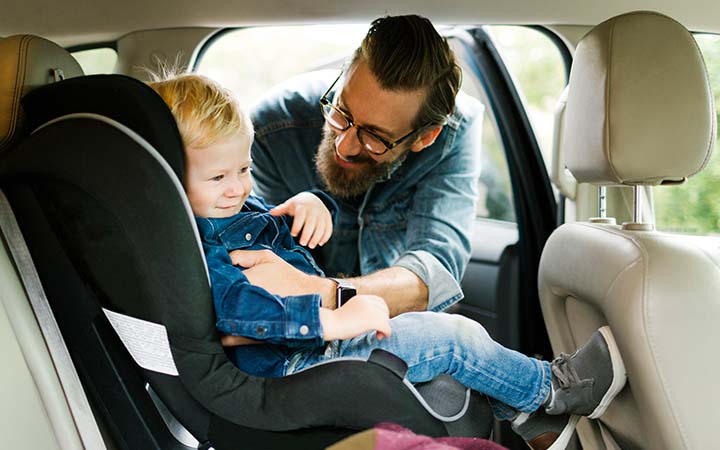Getting the Best Protection From Your Child’s Car Seat
October 07, 2021
 University Hospitals Rainbow Babies & Children'sExperts in Children's Health
University Hospitals Rainbow Babies & Children'sExperts in Children's Health

It can be a challenge for parents to figure out exactly the right time to graduate a child from a rear-facing infant car seat to a forward-facing car seat, then to a booster seat and finally to no child seat at all.
There is no magic age when a child should move up. Instead, your child’s size and physical development are the most important measures, says Jennifer Walker, manager of the UH Rainbow Injury Prevention Center.
UH Rainbow advises parents to use each safety seat until the child reaches the seat manufacturers’ maximum height or weight limits.
“Parents should not be in a hurry to get them to the next milestone,” Ms. Walker says. “With each step taken in the car-seat evolution, the child loses a little protection. The best practice for safety is to max out the height and weight limits for the seat.”
While a child’s age can serve as a general guideline for when to start thinking about next steps in the car seat progression, height and weight are better indicators of when to make that move.
The Rainbow Injury Prevention Center follows these evidence-based, best practice guidelines from the American Academy of Pediatrics:
- Infants and toddlers should ride in a rear-facing seat as long as possible, until they reach the highest weight or height allowed by the seat manufacturer.
- Children who have outgrown the rear-facing weight or height limit for their safety seat should use a forward-facing seat with a harness for as long as possible, up to the highest weight or height allowed by the safety seat manufacturer.
- Children whose weight or height is above the forward-facing limit for their seat should use a belt-positioning booster seat until the vehicle lap and shoulder seat belt fits properly, typically when they have reached 4-feet-9-inches in height and are between 8 and 12 years old.
- When children are old enough and large enough to use the vehicle seat belt alone, they should always use lap and shoulder seat belts for optimal protection.
- All children younger than 13 years should be restrained in the rear seats of vehicles for optimal protection.
Motor vehicle crashes are a leading cause of death among children in the United States. In 2018, 636 children ages 12 and younger died in vehicle crashes, and nearly 100,000 were injured, according to the U.S. Centers for Disease Control and Prevention.
Child safety seats are estimated to reduce risk of injuries by 71 to 82 percent, and the risk of death by 28 percent.
Just as important as following manufacturer guidelines is making sure safety seats are properly installed, Ms. Walker says. She recommends parents seek help from a child passenger safety technician at UH Rainbow or elsewhere.
Car seat fitting services are offered free at various locations.
Related links
The Childhood Injury Prevention Center at UH Rainbow Babies and Children's Hospital works with children and families inside and outside the hospital to help kids of all ages learn and practice safe habits and aid parents in protecting children from the most common risks to child health and well-being. Learn more about the UH Rainbow Childhood Injury Prevention Center, including how to get help selecting, installing, or using a child car seat.
Tags: Child Safety


